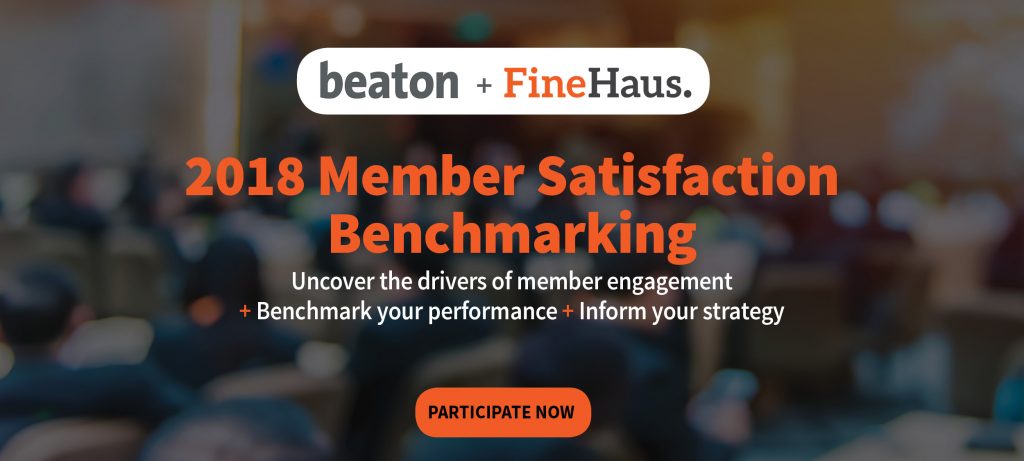
4 key drivers of member engagement
All membership associations are striving to achieve highly engaged members – those who value their membership and rate overall performance of their association highly.
Not only are these members happier – they are also much more likely to recommend your association to others, use your services and to renew their memberships each year.
Every association is different. Understanding the drivers for member engagement at your association (i.e. what matters most to your members and what makes your members happy) and then refining your membership strategy to improve member engagement is vitally important and always challenging – especially if you are operating without reliable data to inform your decision-making.
Yet despite their differences, membership associations also have a lot in common and can learn a lot from each other’s successes (and failures!). To this end, we reviewed the results from the 2017 Membership Satisfaction Benchmarking research conducted by beaton and identified four key themes when it comes to improving member engagement.
Four data-driven member engagement insights
#1 – Service utilisation is a critical driver of member engagement
Members with high engagement are significantly more likely to use more services offered by the association.
The key lesson here is that it is not enough to have a great take-up of your core member service. To achieve high member engagement, you need members to embrace multiple service offerings.
Do you have a clear view of who is using which services and why at your association?
#2 – Who pays for membership matters
The research shows that who pays for membership matters, as it has a significant impact on member engagement and retention.
Members who directly pay for their own membership are more likely to have been members of the association for longer than those whose employer pays for membership.
This may be due to trends of employees switching employers more frequently, leading to lapses or changes in membership, or because these members have personally invested in their own professional development. Those who directly pay are more likely to ‘stick with you’.
Members who pay for themselves are also significantly more interested in the governance of their association. These members want to know that their money is being effectively used to manage the association. If this is true for your association, then it is time to consider how you are communicating with members on major decisions and governance issues.
Interestingly, members whose employers pay for their membership believe they receive significantly more value from their membership, are significantly more likely to recommend the association and to renew their membership.
Do you know who pays for membership at your association? Have you taken this into account in your planning?
# 3 – Members rate Associations that keep them up to date via social media
Members who had seen posts or been contacted by their association on social media rated the performance of their association on keeping them up-to-date on developments or issues affecting their field or business significantly higher than members who had not been exposed to social media communications.
Associations need to understand which social media platforms their members are using, and develop strategies to communicate and comment on the broader issues impacting members as well as the activities of the association and to connect with members online.
Does your social media activity go beyond simply promoting your associations events and activities to members?
#4 – Lack of consultation, transparency and inclusion are key governance issues
The three poorest performing areas of governance for participating associations were consultation with stakeholders in decision-making, transparency in how the association is run, and equitable and inclusive membership participation.
With increasing scrutiny on governance matters across the sector, boards need to know member’s views and associations need to lift their game in these important areas.
How does your association consult with members? How equitable and inclusive is participation at your association?
Improving member engagement at your association
If you want to improve member engagement at your association, then the sensible starting place is to gather reliable data to work from. And the best way to do this is to undertake some member research.
More than 50,000 members were invited to participate in the 2017 Member Satisfaction Benchmarking research conducted by beaton. They belonged to professional membership associations including the Planning Institute of Australia, the Institute of Public Accountants, the Institute of Internal Auditors, ICON, the Association of Accounting Technicians, the Australian and New Zealand Institute of Finance, the Australasian Legal Practice Management Association, The Minerals Institute and The Institute of Public Works Engineering Australasia.
This year, we have teamed up with beaton with the goal of significantly expanding the reach of this insightful and affordable research. If you would like to learn more about the participating in the 2018 beaton + FineHaus Member Satisfaction Benchmarking research, then download the information kit and get in touch with Nicki Hauser.

